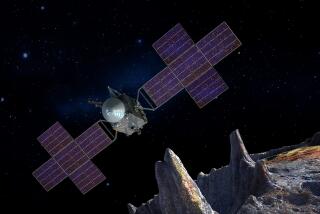Apocalypse Not Just Now
- Share via
The doomsday scenario of an asteroid wiping out the Earth while humans cower helplessly in fear has always seemed unsporting -- a kind of ultimate drive-by shooting from outer space. But in the new issue of the scientific journal Nature, scientists have, well, exploded the notion that asteroids capable of causing catastrophic damage hit the Earth as often as had previously been reckoned. It turns out that the frequency is only about once every 1,000 years, instead of every 200 to 300 years.
With a new environmental hazard seeming to appear almost each day, it’s almost comforting to know that at least one threat to the Earth has been downgraded. The researchers drew on formerly secret data held by the departments of Defense and Energy to conclude that even if an asteroid of the size that wiped out 700 square miles in Siberia in 1908 were to hit the Earth every 1,000 years, a city would probably be destroyed only every 30,000 years because the planet is made up mostly of ocean.
Still, it’s a game of numbers. These objects, also known as minor planets, number in the hundreds of thousands. They’re the junk of space, the residue of a planet destroyed in the distant past. Most travel in a belt between the orbits of Mars and Jupiter. But some adventurous ones have taken a detour and headed for the Earth -- and a good thing too for us. Scientists see an asteroid that hit the Yucatan Peninsula 65 million years ago as the cause of a chilling climate change and the extinction of dinosaurs, and perhaps the rise of mammals.
Asteroids have given in the past, just as they could take away in the future. But if Nature is to be believed, for now these identified flying objects can recede from the worry list.






